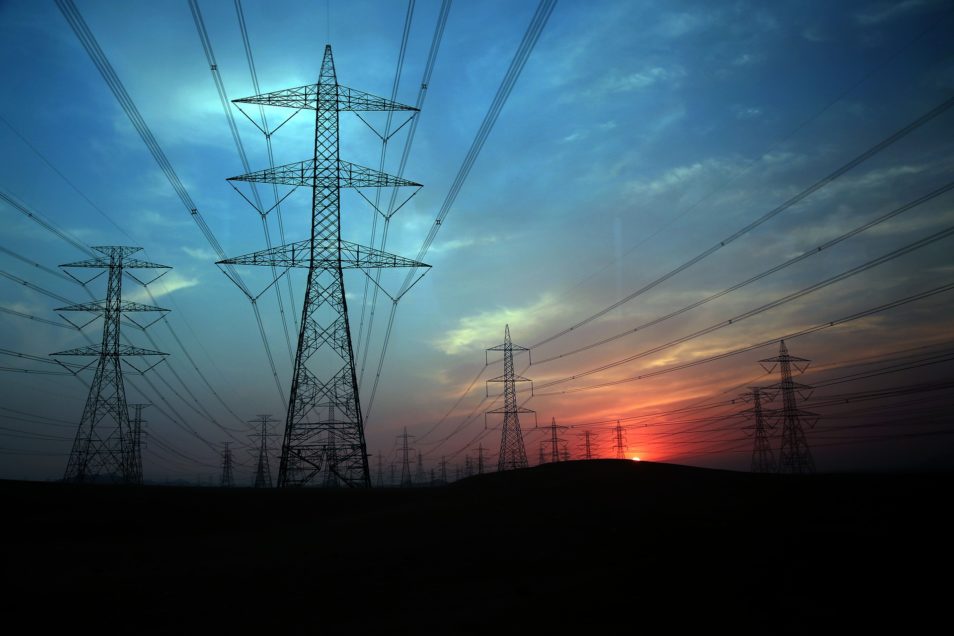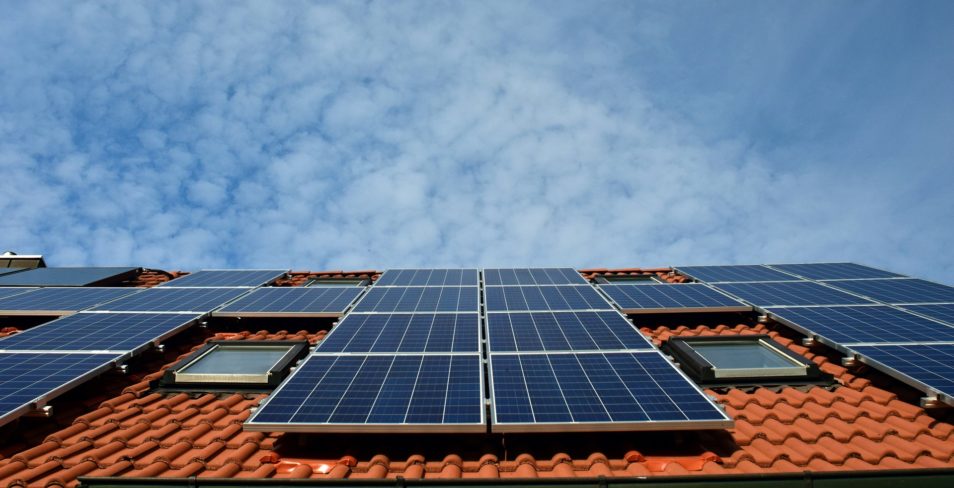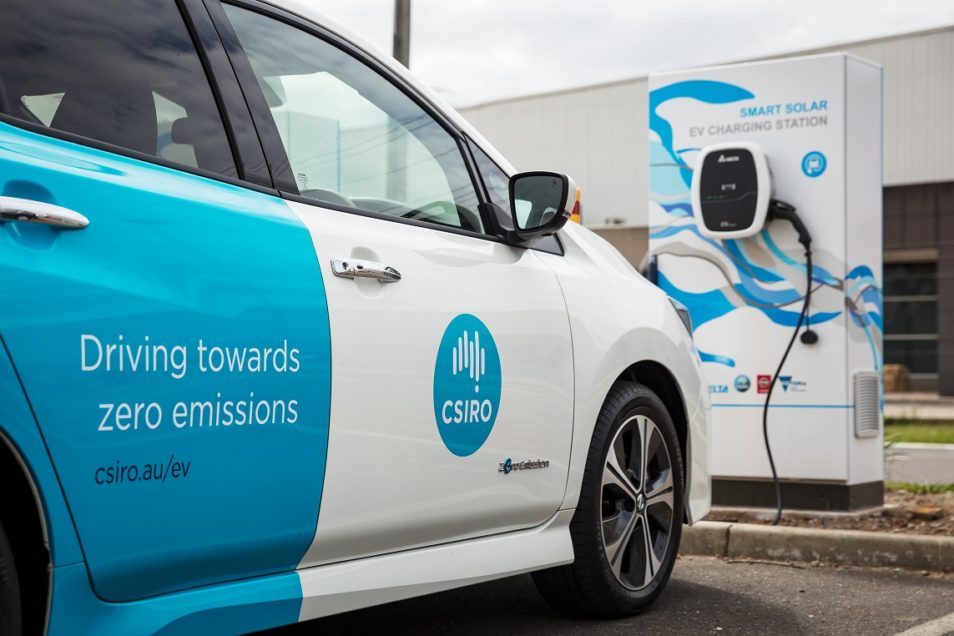
The electricity grid is decarbonising and will continue to do so
Do you want to reduce your carbon footprint? You’ve chosen a great time to do so. Want to capture the sun’s rays to power your home? Great. Tempted to install a household battery? Not a problem. Want to construct a wind turbine out the back? I like the way you think, but you’ll need planning approval. The point is, we currently have more electricity options than ever before. So, there’s no time like the present to go green.
Whether you own your own home, live in an apartment or rent, you have choices. We’ve listed a few ways to get the most sustainable power for your dollar, from your kitchen to your garage.
Beyond efficiency
Before passing go, we need to make sure you’re doing your best on staying cool in summer and warm in winter through smart energy efficiency. Options like LED globes, passive cooling and dressing for the weather can make a huge difference in keeping you comfortable, lowering bills and minimising your carbon footprint.
Now that’s done, we’re going to take things to the next level – where your electricity comes from and the associated emissions.
Stick with grid power
Most houses and apartments are connected to the electricity grid. The good news is that the grid is moving towards renewable sources and will continue to do so.
Renewables are now the least expensive source of new-build electricity. Because of these low costs, it’s generally the only type of technology being commissioned as existing fossil-based power plants retire. We’ll continue to see the grid evolve over coming years, as existing power plants retire into the 2030s and beyond.
But the grid is not without its challenges, like withstanding extreme weather events and dealing with vast numbers of solar photovoltaic (PV) systems (traditional solar panels you see on rooftops) with variable energy output levels. These systems fluctuate more than the consistent energy supply from traditional power stations and this has the potential to affect the grid’s stability.
Our research is focused on how to deal with this variability, which can be managed through batteries, pumped hydro (hydroelectricity), demand management, hydrogen or other innovative solutions.
But if you want to improve your grid-based electricity credentials, you can elect to purchase GreenPower. This is a government-accredited scheme whereby your electricity retailer will find renewably-sourced electricity on your behalf.

Solar photovoltaic (PV) systems.
More than two million households have installed solar PV – it’s a smart way to transition to renewable energy and save money on your bills.
Solar citizens
If you aren’t renting and have access to a roof (i.e. not an apartment building), you can install rooftop solar PV panels. Chances are you’re one of more than two million households and businesses that have already done this. The benefits are huge – the most obvious being after the initial expenses of solar panel purchase and installation, the system will reduce your monthly power bill. You will also have earned the right to feel great about homemade renewable electricity.
If you are renting, depending on your powers of persuasion, you may be able to convince your landlord to install solar. If this option is not available, consider sourcing virtual solar from someone else’s roof. After all, there’s plenty of sun to go around!
Save a bit for later
If your household uses most power during the day, installing solar PV is probably all you need to do. But if you’re part of the majority that uses most of your power later in the day, you could consider installing a battery to shift power from day to evening. This has the added advantage of avoiding ‘tripping-off’ your solar system on a sunny day because too many people are trying to export back to the grid.
If you want to level up, consider making your battery available as part of a virtual power plant (VPP) to support the grid (and possibly get paid for it). It’s a new concept, but there are a number of trials available.
Whether you rent or own, sometimes solar and batteries in an apartment aren’t feasible. In these instances, you can keep an eye out for schemes where apartment dwellers can share the solar from their roof. In this sort of arrangement, buildings with solar PV can sell excess renewable electricity to their neighbours.

Our recently introduced solar-powered EV charging stations are a great way to take your renewable energy use on the go.
Beyond the bowser
So you’ve dabbled with solar panels, green power, virtual power plants or home batteries, but are you amped for more? It’s time to look to your garage.
We’ve seen a significant increase in the number of electric vehicles (EVs) in the Australian market over the last 18 months, and this trend will continue. EVs are the most obvious choice for a greener vehicle option. Additionally, they can reduce local air pollution and are low cost to run.
While charging options are still limited, you can charge your EV off-peak (i.e. through the night) at home to save money, or during the day to catch every last drop of sunshine. Charging technology is advancing rapidly with new systems boasting added features and capability. We recently introduced solar-powered EV charging stations, which is a clever way to link your solar, batteries and vehicle.
In the future, EVs will be capable of much more than the daily commute. Effectively a ‘battery on wheels’, EVs can export power to your home or back to the grid. This will have major impacts on household power bills and, more broadly, on grid stability.
So from your kitchen to your garage, you’ve got the power to make a sustainable power choice for your home, all while keeping comfortable and reducing the impact on the environment and your wallet.
Note: Any examples or links listed in this blog are to illustrate a concept. We recommend households conduct their own research into electricity systems and retailers.


25th October 2019 at 4:30 pm
Solar installers and energy suppliers committed to ensuring that customers are provided with a safe, reliable and efficient supply of electricity for their homes and businesses.should ensure that trees do not shade the installation
25th October 2019 at 3:47 pm
@John Inglis
Thanks for that. A rational and easily understood debunk of the need to manufacture and buy household batteries.
I like the idea of a HVDC between Perth and Adelaide. Why is this not being built?
20th October 2019 at 12:30 pm
I get at least one battery enquiry a day from existing customers.
Here is my standard response:
“Your system is doing pretty well.
Export ranges from ~8kWh per day in winter to ~20kWh/day in summer.
Battery economics are optimised with 100% utilisation of the battery, ie fully charging and discharging the battery daily.
This would suggest a battery no larger than 8kWh.
Enphase’s promotion allows us to supply the first battery for $2100 and $1900 for subsequent batteries.
Six Enphase ACBs add up to 7.2kWh and will cost you $11,600.
Assuming your tariff is 26c/kWh this will reduce your quarterly purchase of energy by $168*.
Of course, your quarterly feed in tariff will reduce by $78*, assuming a FIT of 12c/kWh, so the nett reduction to your bill will be $90*** per quarter.
A nett benefit of $360 per year translates to a payback time of 32 years.
Over the 32 years you’ll have replaced the batteries at least three times, so actual payback is never.
Obviously this makes no sense at all from an economic point of view.
Nor does it make sense form an environmental point of view – embedded carbon cost, disposal of toxic waste etc.
You need either a differential of 88c between purchased and exported kWh or a storage cost of $250 per kWh installed before on grid batteries attain a payback time of 5 years.
Currently prices range from $1000/kWh stored to $1600/kWh stored.
However, Positronic Solar has sold supplied ~300 batteries after explaining the economics, so maybe there are other reasons to install batteries.
They do look pretty on a wall.
Let me know how many you would like.
*7.2 x 0.26 x 90 = $168.48
**7.2 x 0.12 x 90 = $77.46
*** $168.48 – $77.46 = $90”
There is no economic or environmental reason for residential customers to install batteries.
Storage is needed for the grid to utilise renewable energy efficiently but this is done better with pumped hydro than tonnes of short lived toxic batteries.
A HVDC line from Adelaide to Perth with wind farms, solar farms and pumped seawater storage seems to me to be a solution to lots of problems.
18th October 2019 at 3:35 pm
I would prefer the whole of the roof of my house to be clad in Solar Roof Tiles which have the same appearance as normal roof tiles. What is the point in paying an architect top money to design a nice looking house and then have the council insist the owner puts an ugly hot water system or ugly solar panels on the roof, whereas Solar Roof Tiles could be producing electricity from dawn to dusk to power everything.
Gerry Wilson a CSIRO scientist invented light sensitive microdots about ten years ago, they can be spray painted on surfaces and produce electricity when exposed to light.
Why can’t they be spray painted on roof tiles that are fitted with two electrodes which make contact with bus bars stapled to roof battens that feed the electricity to an inverter.
Man is going back to the Moon, surely manufacturing Solar Roof Tiles is not beyond our science.
A whole suburb of houses fitted with Solar roof Tiles would be equal to an invisible power station that no one objects to being located in their vicinity.
18th October 2019 at 2:06 pm
What do I think? I think that any article pushing renewable energy without mentioning the cost of renewable options – especially batteries – and the future costs that existing power grid owners and operators will need to increase to cover their increasing costs forced on them by the large uptake of renewables is a biased and unprofessional article.